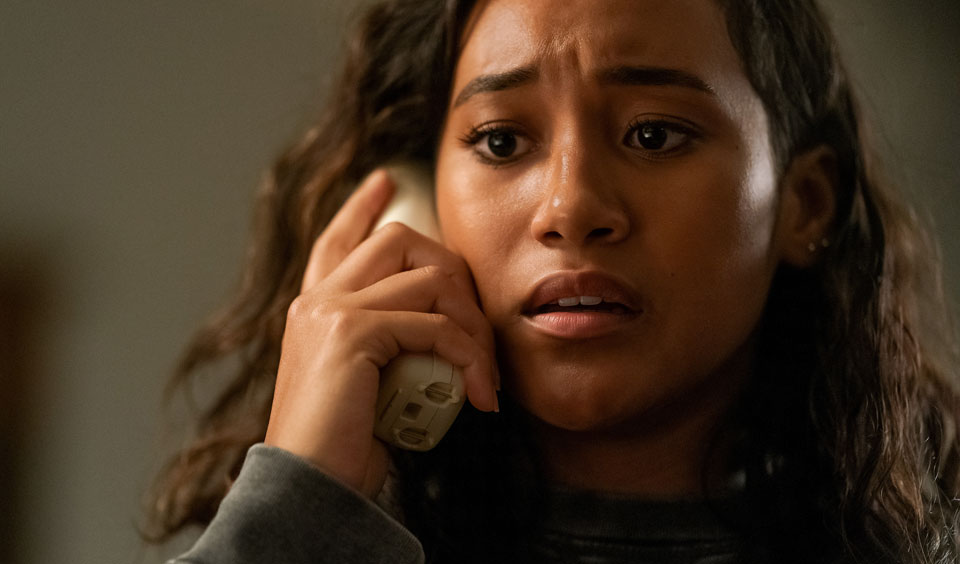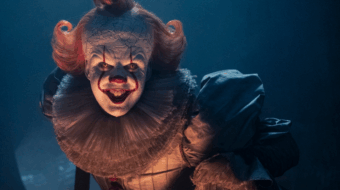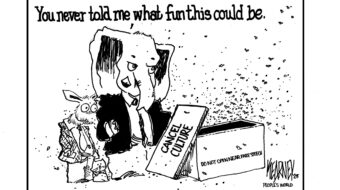
One could argue that slasher horror movies (films featuring a masked murderer) peaked in the 1980s. Since that time, the genre has done the usual wash-rinse-repeat cycle of plot and characters. So much so that the 1996 mega-hit Scream was a welcome breath of fresh air due to its characters’ self-awareness of overdone horror movie tropes even as they lived them. That movie was a near perfect blend of self-awareness while still delivering a scary story. Since then, plenty of movies have come out trying to imitate that mixture—and failed. But occasionally, one comes around that gets it nearly right. There’s Someone Inside Your House is not that film. But, it tries to be, and isn’t horrible at it. What it amounts to is basic good horror fun, with genuine sprinkles of self-awareness and relevant social commentary.
Written by Henry Gayden and directed by Patrick Brice, the Netflix original movie follows the story of Makani Young, a high school teenager who moves from Hawaii to a small-town in Nebraska under mysterious circumstances. Things seem to be going well until she and her classmates are stalked by a killer intent on exposing their darkest secrets to the entire town, terrorizing victims while wearing a life-like mask of their own face. The film is based on Stephanie Perkins’ New York Times best-selling novel of the same name. The plot of this story is probably one you’ve heard hundreds of times. Yet, it isn’t the overarching set-up that makes this movie worth watching, but rather the details added within.
Before I can point out the positives, the stage has to be set by letting it be known where this film falls short. It is very predictable. If you aren’t able to guess who the killer is halfway through the movie, then I’d argue you simply stopped looking at the screen. That reveal becomes painfully obvious the further things play out. If you’re looking for a high body count, you will leave disappointed. There is nothing innovative about how victims meet their demise. The killer has a knife, the knife gets used. Lastly, there are moments that drag on, making this one-hour-and-thirty-minute movie feel longer than it actually is.
Now, here’s the cinema sugar to make the criticism medicine go down. There’s Someone Inside Your House is very much aware of the current so-called culture wars of our time, and makes use of them in a number of smart ways. The most overt way is how it deals with the new phenomenon of “cancel culture.”
For those unfamiliar, cancel culture refers to the calling for mass withdrawal of support for public figures or organizations who have been caught doing things that aren’t socially acceptable today. This “canceling,” or mass shaming, is often publicized on social media platforms such as Twitter or Facebook. On one end, usually progressives, people consider cancel culture a way of holding those in positions of power accountable when they are caught doing racist, sexist, or overall harmful acts to others. On the other side of this argument are those that consider holding people in power accountable as a “witch hunt.” Republicans in particular often vilify the idea of cancel culture, just as Florida Rep. Matt Gaetz did at the 2020 Republican National Convention.
The killer in There’s Someone Inside Your House wants to “cancel” many of the students for some rather questionable things they have done. From possible homophobia to using hate speech on the dark web, those targeted aren’t exactly innocent victims. And therein lies the beauty of this detail.
There’s a grey area when it comes to the kind of punishment, if any, those targeted should get. The dialogue of the students concerning their slain classmates plays out similar to the real public discourse around public figures caught in scandals and debates over whether they deserved their demise. In the case of the movie, it’s death; in the case of real life, it may simply be a cancelled brand deal or a lost job. The movie is aware of this, and plays it up, making for some effective social commentary on cancel culture, power structures, and accountability.
How far is too far when it comes to punishing someone who has done wrong? Is there no such thing as redemption? In a very subtle way, the film explores these questions.
Another highlight is the diversity of the cast. The main character Makani (played by Sydney Park) is an African-American and Asian woman. Those unfamiliar with the horror genre may not get the significance, but even in the year 2021, it is still rare to get a woman of color as the main protagonist in this genre. Often, non-white characters are relegated to supporting roles, doomed to be notches on the killer’s murder belt. It’s refreshing to see Makani have an agency and focus usually not afforded to a person like her. This also holds true for characters in the film identifying as members of the LGBTQ community.
The film plays on this as well. Self-aware commentary is given on the topics of tokenism and virtue signaling. Those who are angry at films they feel have gone too “woke” (usually just a buzzword used in a derogatory manner towards anything not centering whiteness or capitalist greed) will probably hate this movie for those reasons alone. That’s alright, this movie isn’t for them.
There’s Someone Inside Your House tries to strike a balance between being a tried-and-true slasher flick and socially relevant. This attempt is where it falls short, because it would have been better had it leaned more into the aforementioned details that helped make it unique. It only scratches the surface, so ideas are left unrealized, but the potential is there. The movie isn’t spectacular, but its subversion of overdone horror tropes and highlighting of current social issues makes it worth a watch.
There’s Someone Inside Your House is currently available globally on the Netflix streaming service.










